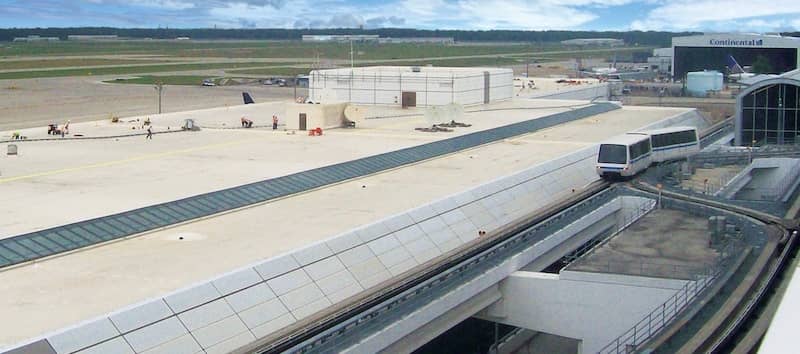 Winter is coming which means you will want to do a few basic maintenance tasks in order to keep your commercial roof safe and leak-free during the cold weather months. The cycle of going through very hot summers and cold winters is especially hard on a commercial roofing system. As a result, it is recommended that roofing systems are inspected twice a year, generally in the fall and again in the spring.
Winter is coming which means you will want to do a few basic maintenance tasks in order to keep your commercial roof safe and leak-free during the cold weather months. The cycle of going through very hot summers and cold winters is especially hard on a commercial roofing system. As a result, it is recommended that roofing systems are inspected twice a year, generally in the fall and again in the spring.
What You Need
Doing a simple inspection usually only requires a few basic tools:
- Flashlight - Being able to look at shadowed areas, or parts of your roof under some sort of protective covering, can increase the chances that you will be able to see cracks or rusting bolts/screws if they are present.
- Notebook - This can be anything from a simple pad of paper to jot down what you find during the inspection to a comprehensive roofing checklist. Keeping a record of what you find on the roof makes it easier to act on problems that arise.
- Camera - Getting a good picture of what you think might be a problem can give a professional a visual of the issue without needing to get on the roof. A high quality picture can tell a roofing repair technician quite a bit more than even a detailed written explanation.
While less common, infrared inspections can also be utilized during your pre-winter inspection.
Possible Problems
Even newer roofs can experience weathering. In general, the longer the roof has been on a commercial building, the more likely it is that degradation can occur. Some of the more common problems include:
- Cracked caulking - This is usually found on older roofs, but can be found on relatively new roofs as well if the installer used the wrong type of caulk. As soon as cracks appear, you need to remove the old material and new caulking (appropriate for the climate) should be applied. Most caulk will not be able to set properly in low temperatures, so it is best to repair in the early fall.
- Separated roof segments - If you can run your finger across the space where two roofing panels meet and feel that one is higher than the other, you will usually need to make a repair. When a sizable gap occurs, rain or melting snow can seep underneath the protective outer roofing layer, compromising any wood or un-galvanized bolts and screws, as well as cause leaks into the building.
- Loose or clogged drain pipes - Proper drainage is essential in keeping water out of your building and maintaining the structural integrity of the roof. Drain pipes that are overflowing should be unclogged immediately since pooled water can freeze and expand, possibly causing major headaches.
Taking a small amount of time out of your day personally, or assigning maintenance personnel to look over your roof, can save you a lot of time and money preventing future problems. If you do hire a contractor to inspect your commercial roofing system, be sure to ask plenty of questions to ensure you are getting the most out of your inspection.
What are some common roofing problems you see during routine inspections? Share your experience in the comments.
Information in this article is based off content from Facility Executive.
-1.png?width=500&height=271&name=FiberTite_Only%20(500px%20wide)-1.png)

-1.png)